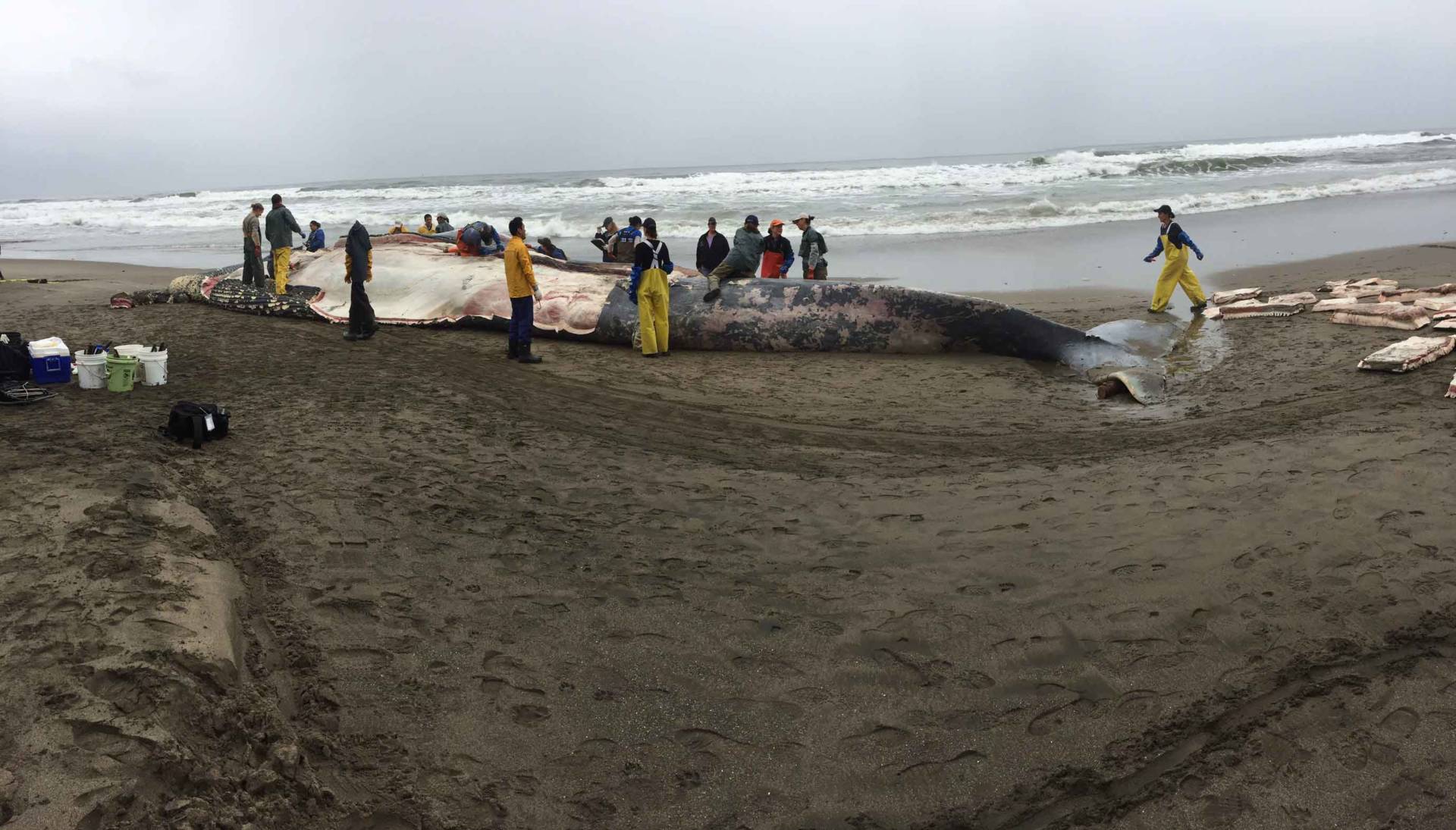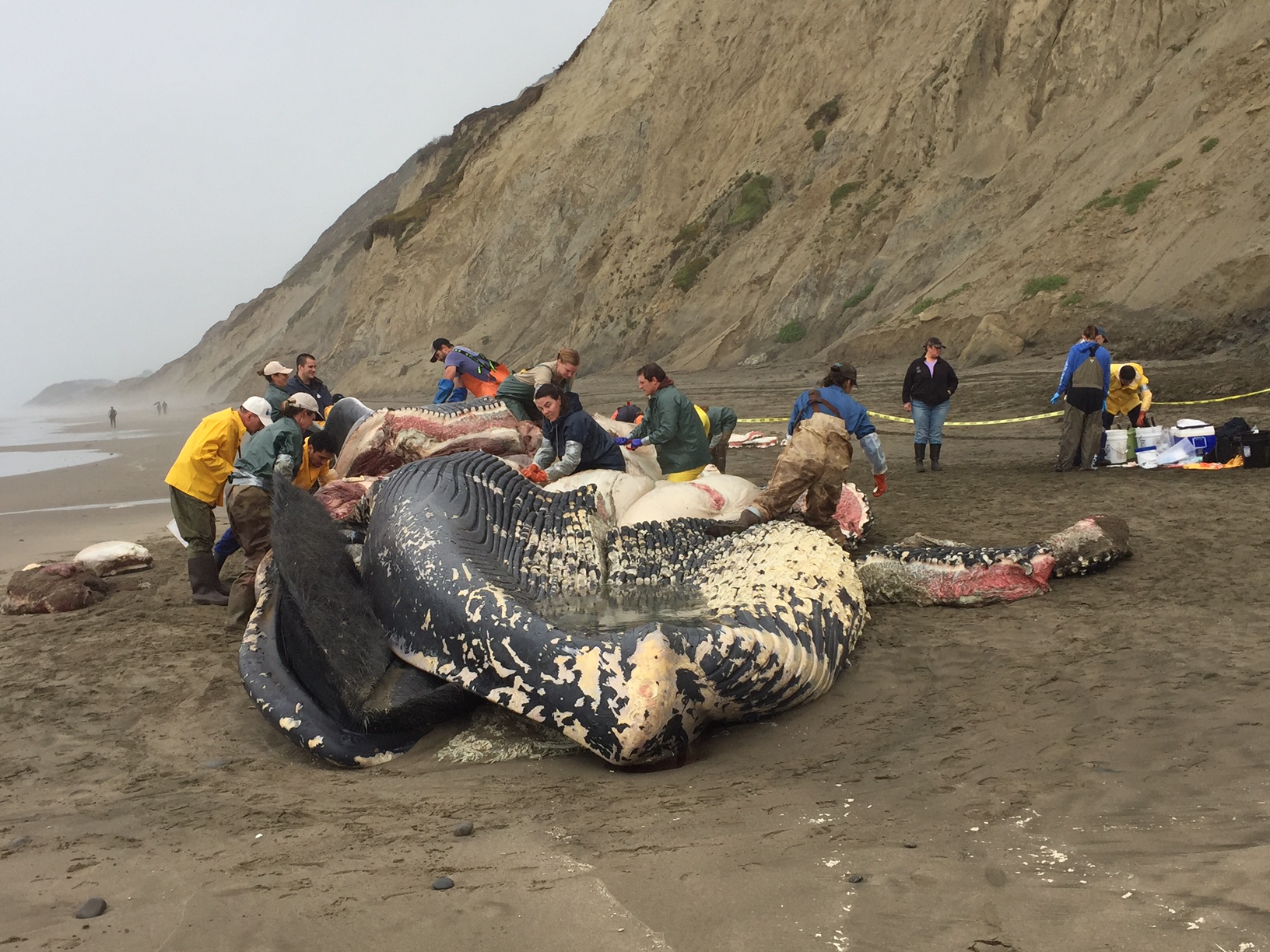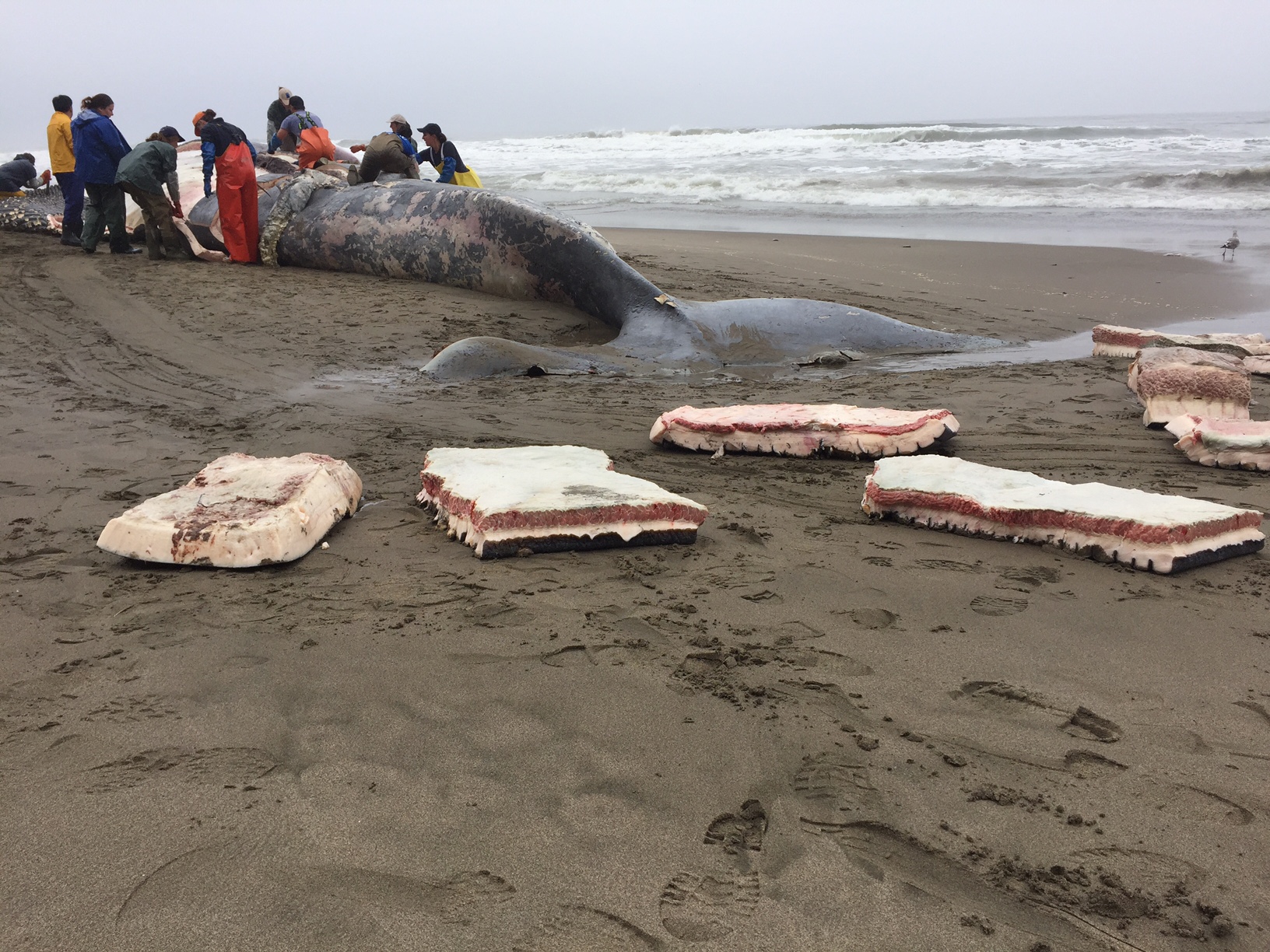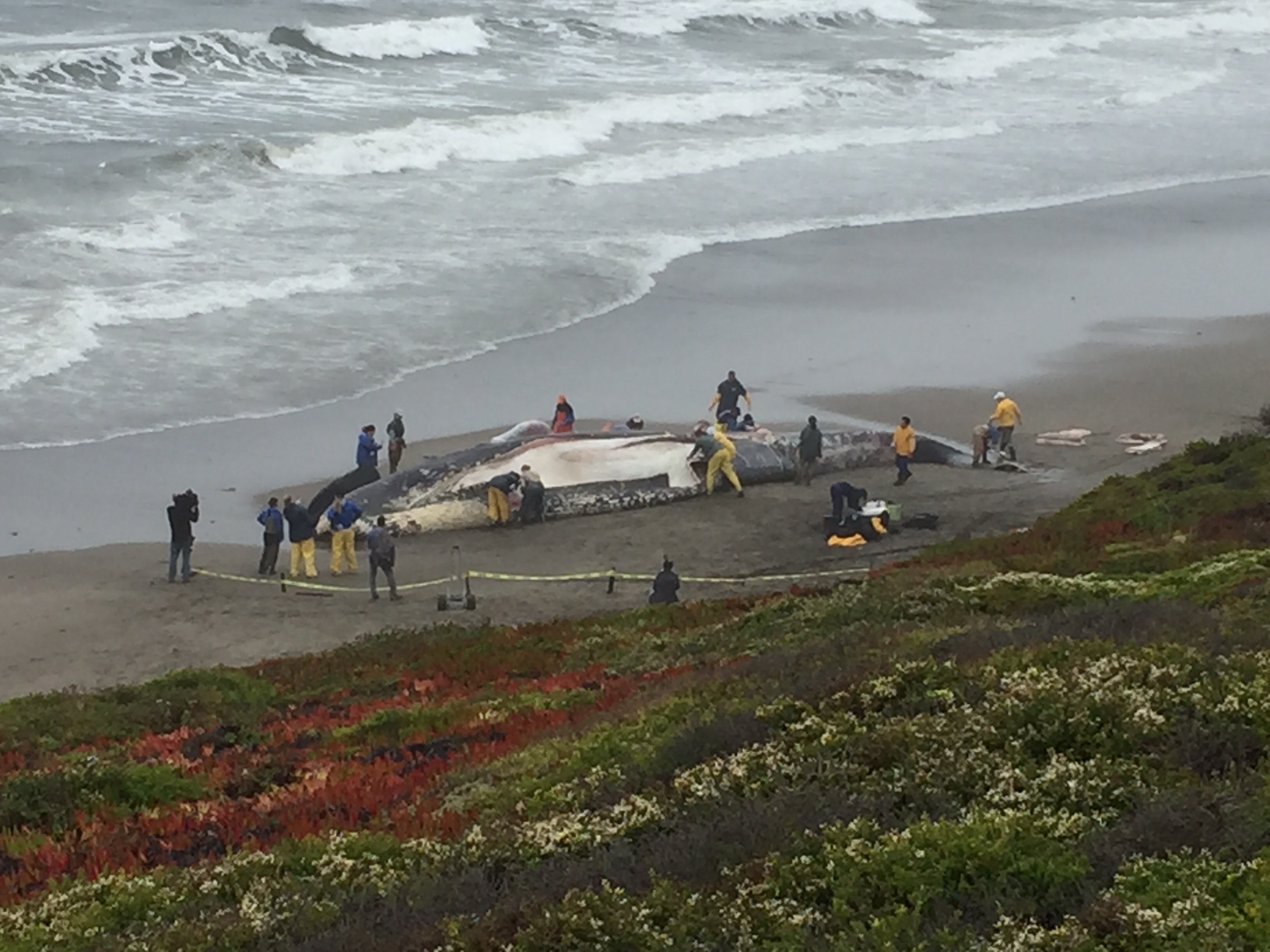Scientists are still seeking answers in the rare beaching of a blue whale in Northern California this week.
The 65-foot male washed ashore Wednesday on Westmoor Beach in Daly City. On Thursday scientists dissected the carcass in an effort to determine what killed the endangered cetacean.
About twenty scientists crowded around the carcass, about the length of one-and-a-half school buses. Barbie Halaska, from The Marine Mammal Center, was one of those sawing into its thick flesh with a serrated knife to extract tissue samples.
“We actually take the blubber pieces so it can be analyzed for contaminants, so it’s a really thorough way of finding out how deep the contaminants may go,” says Halaska.

Some blubber samples were so heavy, it took two-person teams to haul them away with meat hooks. The California Academy of Sciences took pelvic bones and TMMC took tissue and blubber back to their respective labs for further analysis. The center will analyze the flesh for contaminants like DDT and flame retardants.




